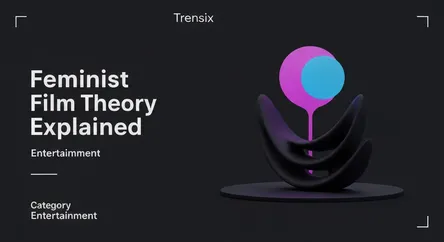Entertainment
Feminist Film Theory Explained

Explore feminist film theory, from Laura Mulvey's 'male gaze' to how it critiques gender representation and power dynamics in cinema.
What is it?
Feminist film theory is a critical approach to cinema analysis that emerged in the 1970s. It examines film through a feminist lens, focusing on how gender is represented and how cinematic language constructs notions of masculinity and femininity. A foundational concept is Laura Mulvey's 1975 essay, "Visual Pleasure and Narrative Cinema," which introduced the idea of the "male gaze." This theory posits that mainstream cinema is often framed from a masculine, heterosexual perspective, positioning female characters as passive objects of desire for both the male characters on-screen and the male viewer in the audience. The theory critiques the objectification of women and unpacks the power dynamics at play in storytelling.
Why is it trending?
Feminist film theory is experiencing a resurgence due to contemporary discussions about gender equality, particularly within the entertainment industry. Movements like #MeToo and Time's Up have highlighted systemic issues of sexism and representation in Hollywood, prompting creators and audiences to re-examine classic and modern films. There's a growing demand for diverse stories and complex female characters that subvert traditional roles. As a result, concepts like the male gaze and the Bechdel test have entered mainstream conversation, used as tools to critique new releases and advocate for more inclusive filmmaking.
How does it affect people?
This theory provides viewers with a framework for critical thinking about the media they consume. It encourages audiences to look beyond the surface of a story and question who is telling it, whose perspective is centered, and how characters are portrayed. By understanding concepts like the male gaze, people can better identify and challenge gender stereotypes and objectification on screen. This heightened awareness can influence viewing habits, fostering a demand for films that offer more equitable and authentic representations of women and diverse gender identities, ultimately shaping the future of the industry.